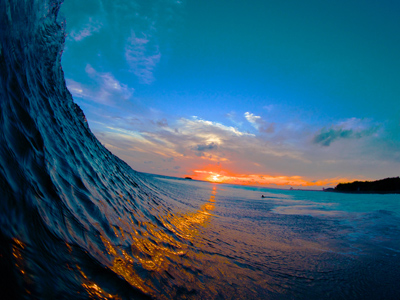
Tsunamis
This GCSE Geography quiz is about tsunamis. At about a quarter to three in the afternoon of the 11th March 2011, a huge and powerful natural hazard known as a tsunami crossed the coast of Japan and flooded buildings and farmland up 10 km inland. About 16,000 people were known to have died with about 2,500 missing and over 200,000 made homeless. A nuclear power station was damaged and the people living within 20 km of it had to be evacuated to escape the radiation leaks.
All this happened when the fourth largest earthquake in the world (since records began in 1900) occurred a few km off the east coast of Japan - two of the Earth's tectonic plates had suddenly moved about 20 metres.
Tsunamis are caused by large underwater landslips or earthquakes. They travel as a fast-moving wave or series of waves through a sea or ocean and are hardly noticeable in deep water.
When they approach land, where the water is much shallower, their true height and power is seen. First, the water recedes from the coast, often by a distance of hundreds of metres. Then the wave arrives. At its maximum, the 2011 Japanese tsunami was 40 metres high.
The main defence against a tsunami is to evacuate as many people as possible before it arrives, which is not easy as sometimes there is little warning. Evacuation may be to get people inland or simply getting them as high as possible in a tsunami-proof building. Building high sea walls could also help. When a tsunami is created close to a coastline, there may be only a few minutes warning. It might be possible to out-run the wave in a motor vehicle on a straight road but on foot, there is no chance, they move rapidly.
The primary effects of a tsunami are the destruction of property and flooding. The secondary effects are much greater and can include both short- and long-term events. For example, after the Japan tsunami, the oyster fishing industry was destroyed in the area, there were fires from burst gas pipelines, people left the area forever in fear of future tsunamis and large amounts of floating debris entered the Pacific ocean with the backwash from the tsunami.
After any natural disaster, there are both short-term (e.g. rescuing injured or stranded people, erecting temporary housing and putting out fires) and long term responses. The long-term responses are mainly about cleaning up and rebuilding, together with improving early warning systems and other tsunami defence infrastructure like sea walls.
Ready for more?
not all...
quizzers. Try to win a coveted spot on our Hall of Fame Page.







